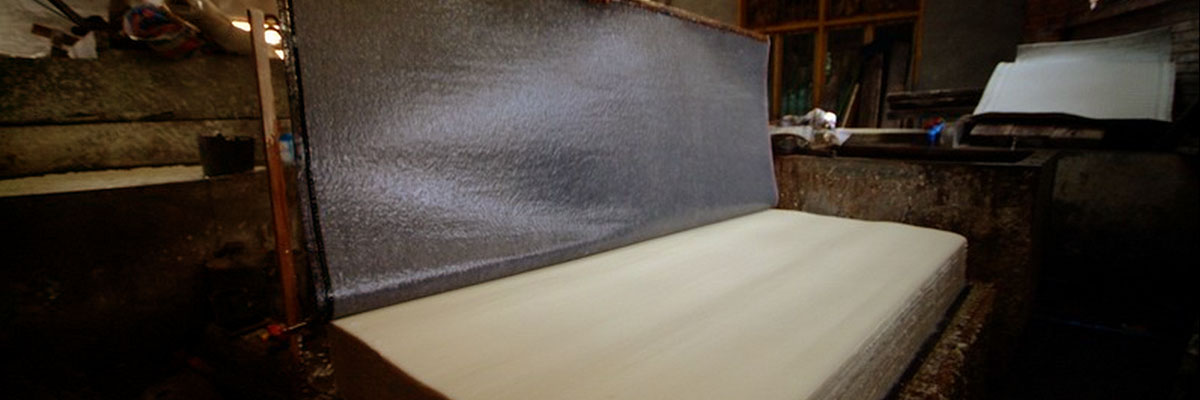Bamboo paper holds a significant place in China’s traditional handmade papermaking heritage, renowned for its long history and diverse varieties. Its invention marked a breakthrough in using plant stalk fibers for paper production. Favored for its high yield, low cost, and renewability, bamboo paper became widely popular. Among its finest examples is Yanshan Lianshi Paper from Jiangxi, celebrated for its snow-white sheen, delicate texture, and resistance to insects and heat. Historically, it was used for precious books, legal documents, and folding fans. In 2006, the craftsmanship of Yanshan Lianshi Paper was inscribed into China’s first National Intangible Cultural Heritage List.

"A single sheet is hard-won, seventy-two steps to craft"—this saying reflects the painstaking process of making Lianshi Paper, involving 72 meticulous steps, from bamboo fiber preparation to pulp bleaching and sheet forming, taking nearly a year to complete. Even today, most steps rely on manual craftsmanship, guided by experience rather than standardized measurements.
Lianshi Paper primarily uses young bamboo from the Wuyi Mountains, harvested around Lixia (Early Summer) when the shoots are tender and rich in pulp. The initial stage involves cutting, drying, fermenting, stripping fibers, and sun-curing the bamboo strands. A crucial step is natural bleaching, where the processed fibers are left on mountain slopes to let sunlight and dew gently remove pigments.
Zhang Shikang, a national inheritor of this craft, explains that preparing raw materials alone takes over half a year, and rushing the process with machinery would drastically shorten the paper’s lifespan. Shen Si, an apprentice, emphasizes that Lianshi Paper surpasses modern industrial and chemical papers in durability, earning it the title "Millennium Paper" for its exceptional archival quality, making it highly valued among collectors.
Also known as "Lianshi Paper", its resistance to yellowing and pests made it a preferred choice for ancient books, calligraphy, contracts, and paintings. To preserve this heritage, local governments and enterprises have established workshops, research centers, and training institutes to nurture new artisans.
Shen Si notes that creating contemporary cultural products inspired by this craft helps boost market appeal, allowing more people—especially younger generations—to appreciate intangible cultural heritage and participate in its revival. Through innovation and tradition, Lianshi Paper continues to thrive in the modern era.